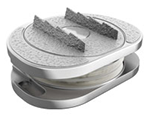For many, disc replacement offers advantages over spinal fusion, including preserving spinal mobility and potentially faster recovery, while fusion provides stability and is suitable for a broader range of conditions.
Here’s a more detailed comparison:
Spinal Fusion:
- How it works:Fuses two or more vertebrae together to create a solid bone structure, eliminating movement at that level.
- Pros:
- Stability: Provides a stable spine, reducing pain caused by instability, degenerative disc disease, and certain spinal deformities.
- Wide applicability: Suitable for a broader range of spinal conditions, including complex cases.
- Long-term results: Often provides good long-term outcomes, especially for patients with significant spinal pathology.
- Cons:
- Loss of motion: Limits movement at the fused level.
- Longer recovery time: Typically requires several months to heal and return to normal activities.
- Potential complications: Risks include infection, failed fusion, and adjacent segment degeneration.
- When it’s used:For conditions where spinal instability or deformity is a major issue, or when disc replacement is not a suitable option.
Disc Replacement:
- How it works:Replaces the damaged disc with an artificial disc, allowing for continued movement at that level.
- Pros:
- Preserves motion: Allows the spine to maintain its natural range of motion.
- Faster recovery: Typically has a faster recovery time compared to spinal fusion.
- Reduced stress on other vertebrae:Allows more natural movement, potentially reducing stress on adjacent vertebrae.
- Lower risk of adjacent segment degeneration: Preserving motion may reduce the risk of problems in the segments above and below the replaced disc.
- Cons:
- Not suitable for all patients: May not be appropriate for all spinal conditions, particularly those with significant instability or deformity.
- Potential complications: Risks include implant failure, misalignment, and infection.
- When it’s used:For conditions where preserving spinal mobility is important, such as in younger, active individuals with degenerative disc disease or herniated discs.
Which is better?
- The best choice depends on the individual’s specific condition, age, activity level, and surgeon’s recommendations.
- Disc replacement is often preferred: for patients who want to maintain a high level of activity and mobility, while spinal fusion is often preferred for patients with significant spinal instability or deformity.
- Consult with a spine surgeon: to discuss the pros and cons of each procedure and determine which is the best option for your specific needs
